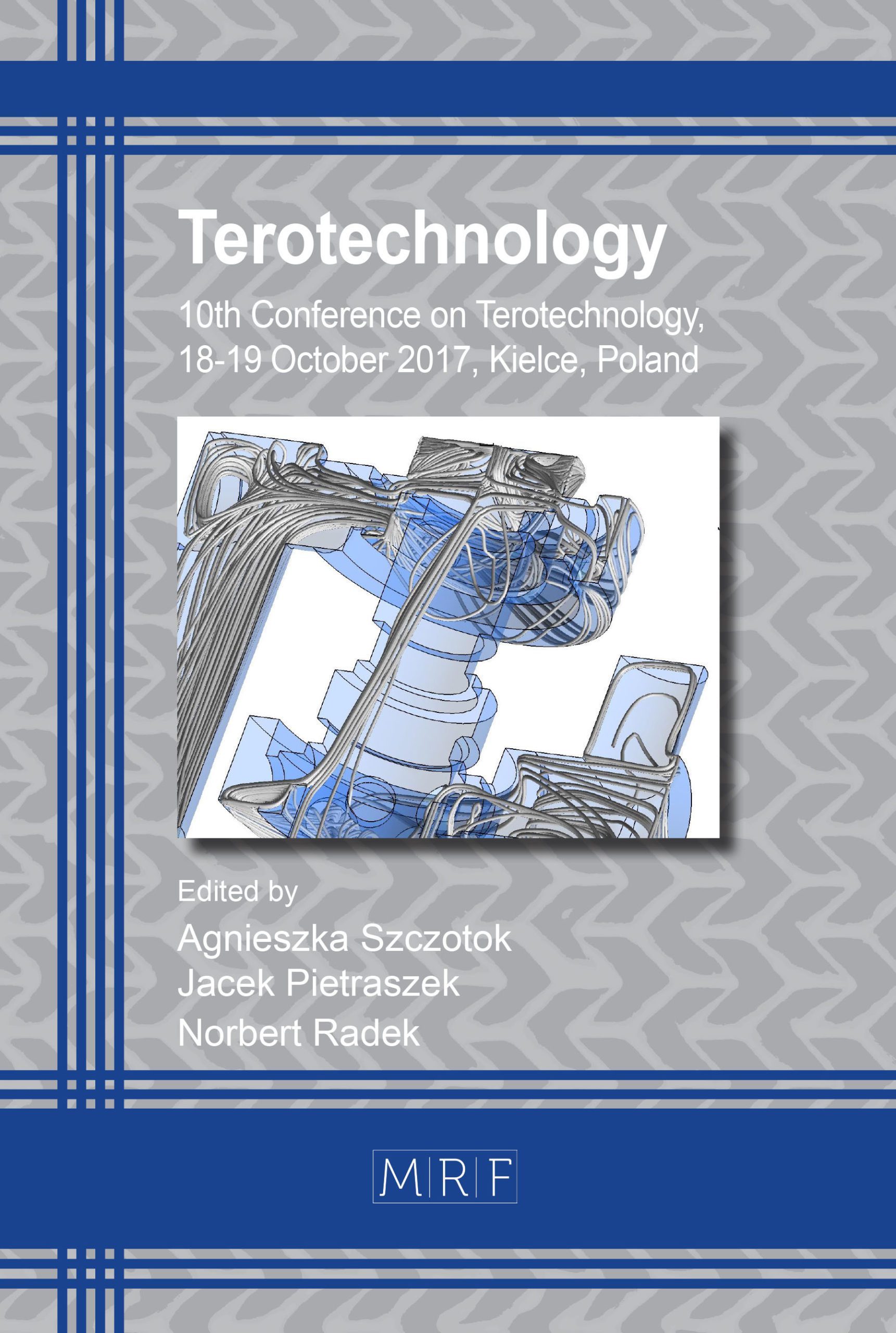Mechanical Properties of Anti-Graffiti Coating Systems used in the Railway Industry
RADEK Norbert, PASIECZYŃSKI Łukasz, MAKRENEK Medard, DUDEK Agata
download PDFAbstract. The paper presents comparative tests results of selected properties of anti-graffiti paint systems for rolling stock industry. The system consists of a high solid corrosion protection primer, putty, filler, basecoat and anti-graffiti clearcoat. The research was based on an anticorrosion coatings system with a transparent layer with reduced adhesion of each subsequent types of contamination. The results of the research focus on the analysis of microstructure and measurements of nanohardness and adhesion.
Keywords
Anti-Graffiti Coatings, Mechanical Properties, Rail
Published online 7/16/2018, 5 pages
Copyright © 2018 by the author(s)
Published under license by Materials Research Forum LLC., Millersville PA, USA
Citation: RADEK Norbert, PASIECZYŃSKI Łukasz, MAKRENEK Medard, DUDEK Agata, ‘Mechanical Properties of Anti-Graffiti Coating Systems used in the Railway Industry’, Materials Research Proceedings, Vol. 5, pp 243-247, 2018
DOI: http://dx.doi.org/10.21741/9781945291814-43
The article was published as article 43 of the book Terotechnology
![]() Content from this work may be used under the terms of the Creative Commons Attribution 3.0 licence. Any further distribution of this work must maintain attribution to the author(s) and the title of the work, journal citation and DOI.
Content from this work may be used under the terms of the Creative Commons Attribution 3.0 licence. Any further distribution of this work must maintain attribution to the author(s) and the title of the work, journal citation and DOI.
References
[1] R. Ulewicz, F. Novy, J. Selejdak, Fatigue strength of ductile iron in ultra-high cycle regime, Advanced Materials Research 874 (2014) 43-48. https://doi.org/10.4028/www.scientific.net/AMR.874.43
[2] R. Ulewicz, Hardening of steel X155CrVMo12-1 surface layer, Journal of the Balkan Tribological Association 21 (2015) 166-172.
[3] M. Madej, The effect of TiN and CrN interlayers on the tribological behavior of DLC coatings, Wear 317 (2014) 179-187. https://doi.org/10.1016/j.wear.2014.05.008
[4] M. Madej, D. Ozimina, Electroless Ni-P-Al2O3 composite coatings, Kovove Materialy-Metallic Materials 44 (2006) 291-296.
[5] N. Radek, E. Wajs, M. Luchka, The WC-Co electrospark alloying coatings modified by laser treatment, Powder Metallurgy and Metal Ceramics 47 (2008) 197-201. https://doi.org/10.1007/s11106-008-9005-7
[6] N. Radek, J. Konstanty, Cermet ESD coatings modified by laser treatment, Archives of Metallurgy and Materials 57 (2012) 665-670. https://doi.org/10.2478/v10172-012-0071-y
[7] J. Pietraszek, N. Radek, K. Bartkowiak, Advanced statistical refinement of surface layer’s discretization in the case of electro-spark deposited carbide-ceramic coatings modified by a laser beam, Solid State Phenomena 197 (2013) 198-202. https://doi.org/10.4028/www.scientific.net/SSP.197.198
[8] N. Radek, J. Pietraszek, B. Antoszewski, The average friction coefficient of laser textured surfaces of silicon carbide identified by RSM methodology, Advanced Materials Research 874 (2014) 29-34. https://doi.org/10.4028/www.scientific.net/AMR.874.29
[9] M. Scendo, N. Radek, J. Trela, Influence of laser treatment on the corrosive resistance of WC-Cu electrospark coatings, International Journal of Electrochemical Science 8 (2013) 9264-9277.
[10] A. Góral, W. Żórawski, M. Makrenek, Sz. Kowalski, Microstructure and properties of cold sprayed composite coatings, Journal of Achievements in Materials and Manufacturing Engineering 81 (2017) 49-55. https://doi.org/10.5604/01.3001.0010.2037
[11] J. Radziszewska-Wolińska, Fire properties of anticorrosion coatings to rolling stock, Technical Transactions 3-M (2016) 79-86.
[12] A.J. Izenman, Modern Multivariate Statistical Techniques. Regression, Classification, and Manifold Learning. Springer, New York, 2008.
[13] E. Skrzypczak-Pietraszek, J. Slota, J. Pietraszek, The influence of L-phenylalanine, methyl jasmonate and sucrose concentration on the accumulation of phenolic acids in Exacum affine Balf. f. ex Regel shoot culture, Acta Biochim. Pol. 61 (2014) (1) 47-53.
[14] J. Pietraszek, Response surface methodology at irregular grids based on Voronoi scheme with neural network approximator, Adv. Soft Comp. (2003) 250-255.
[15] J. Pietraszek, M. Kolomycki, A. Szczotok, R. Dwornicka, The Fuzzy Approach to Assessment of ANOVA Results, Lect. Notes Artif. Int. 9875 (2016) 260-268. https://doi.org/10.1007/978-3-319-45243-2_24
[16] A. Gadek-Moszczak, S. Zmudka, Description of 3D microstructure of the composites with polypropylene (PP) matrix and Tuf particles fillers, Solid State Phenom. 197 (2013) 186-191. https://doi.org/10.4028/www.scientific.net/SSP.197.186
[17] A. Gadek-Moszczak, J. Pietraszek, B. Jasiewicz, S. Sikorska, L. Wojnar, The Bootstrap Approach to the Comparison of Two Methods Applied to the Evaluation of the Growth Index in the Analysis of the Digital X-ray Image of a Bone Regenerate, Stud. Comput. Intell. 572 (2015) 127-136. https://doi.org/10.1007/978-3-319-10774-5_12
[18] A. Gadek-Moszczak, L. Wojnar, Objective, Quantitative and Automatic X-Ray Image. Analysis of the Bone Regenerate in the Ilizarov Method, ECS10: The10th European Congress of Stereology and Image Analysis (2009) 453-458.
[19] A. Szczotok, S. Roskosz, New possibilities of light microscopy research resulting from digital recording of images, Mater. Sci.-Poland 23 (2005) (2) 559-565.
[20] A. Szczotok, Metallographic Study of the Casting Made from Cmsx-6 Sc Nickel-Based Superalloy, Arch. Metall. Mater. 62 (2017) (2) 581-586.































